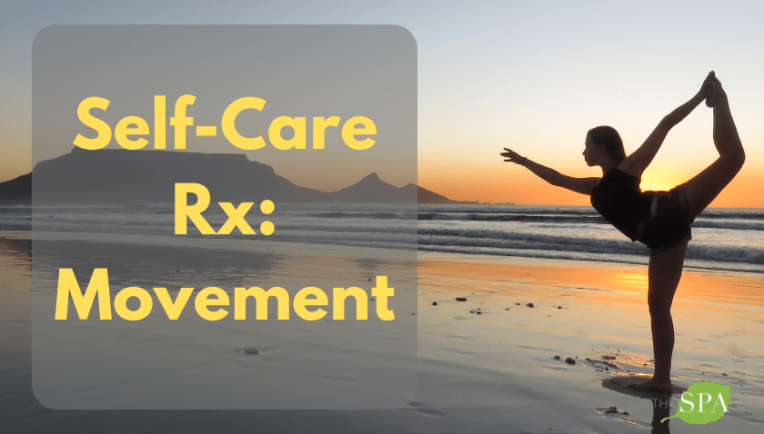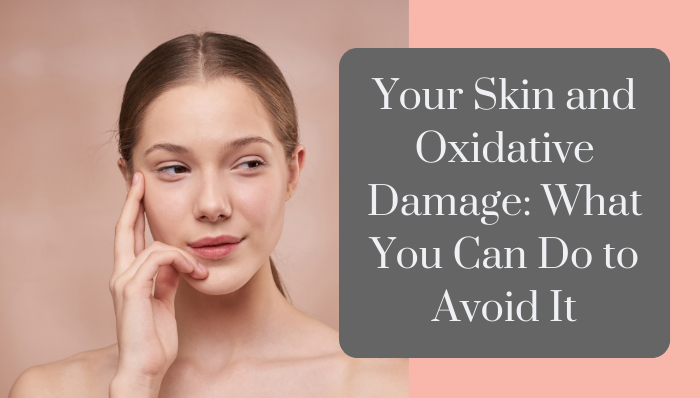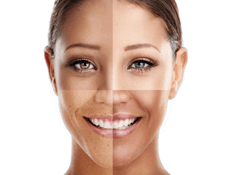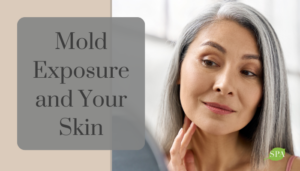True health care starts with excellent self-care, and this Self-Care Rx series is about improving your skin from the inside and out and helping you look and feel your best. Today’s prescription is all about the benefits of movement.
You may have heard how exercise helps your body stay healthy and fit, but do you know exactly how it impacts your skin as well? Maybe you have noticed that post-exercise glow or that people who exercise often have more youthful-looking skin.
Exercise offers a plethora of health benefits – it strengthens muscles and bones, improves sleep and mood, boosts the immune system, supports memory and cognition, improves body composition, and reduces the risk for arthritis, certain cancers, diabetes, and heart disease.
And when you exercise throughout your life, studies show it can slow signs of aging.
Why does this happen?
When you exercise, you move your major muscle groups, which not only increases blood flow to your heart but also to the surface of your skin. When you improve circulation to the capillaries and blood vessels that supply blood flow to your skin, you’re helping increase healing time for your skin’s recovery.
Also, when you exercise you can perspire, which is a form of detoxification. When you exercise, your body experiences lipolysis, which means the fat cells break down. And since fat cells are one of the main areas where we store toxins in the body, lipolysis helps with breaking up and releasing those toxins from fat cells so they can be released into circulation and properly eliminated from the body.
And when you get outdoors for exercise, your body gets valuable sunlight exposure which helps boost your vitamin D levels. Vitamin D is important for the skin and immune system. Being outdoors is also known to help promote a healthy microbiome, and exercise has been shown to improve the gut microbiome. There are also great hormones and neurotransmitters transmitters that are stimulated with exercise.
So, as you can see, this helps to address the root causes behind the skin issues that I talk about in my book, Clean Skin From Within.
Aging and Exercise
Our muscle mass usually starts to decline after we reach 25–30 years of age. Moderate intensity exercise (≤70% of VO2max or ≤80% of maximum heart rate) involving mostly the aerobic exercise and large muscle usage (such as brisk walking and bicycling) slows down signs of aging, especially around cardiovascular health and fitness. Exercise also improves mitochondrial function. Mitochondria are the powerhouses of the cell, so that helps with the anti-aging benefits of regular moderate exercise.
Regular exercise helps maintain telomere length as we age. The shortening of telomeres is typically related to aging and is also connected to a shortened life span and increased risk of diseases. Lifestyle choices can help with this.
Researchers at McMaster University in Ontario examined the effects of exercise on the skin by taking skin samples from buttocks of volunteers. They found that after age 40, the men and women who exercised regularly had thinner, healthier stratum corneum, and thicker dermis layers, which are indicative of younger appearing skin. So, their skin was much more like the skin of 20- and 30-year-olds than of others of their age (even in 65-year-olds). This is largely because of myokines, which are substances that enter the bloodstream and initiate cellular changes.
Skin and Exercise
During exercise, blood flow to the skin is increased in order to dissipate heat by sweating, as core temperature rises. Sweat helps cool off the skin and flushes out impurities, and it contains sweat gland-derived antimicrobial peptides. This can actually help keep your skin microbiome in a healthy balance!
According to a study in JAMA Dermatology, a 30-minute daily regimen of a facial exercise program sustained over 20 weeks may modestly improve the facial appearance of selected middle-aged women. It showed significant improvement in upper and lower cheek fullness. The study notes that “participants were highly satisfied, noting a significant improvement in 18 of 20 facial features.” This study had limitations thoughts; the sample was small and there were a number of dropouts, plus no control group in the study.
Skin Care Tips Before, During and After Exercise
- Take off all makeup
- Use only a light serum and/or moisturizer if you need skin hydration and are prone to oily skin
- Pat (rather rub) sweat off during exercise
- Keep hair off your face while exercising
- Take a shower and change clothes after exercise
- Give your skin a chance to cool down before applying makeup
- If you use hair bands or hats, wash them often
- Exfoliate your skin one to two times weekly
Acne: Exercise does not cause acne, but you do need to clean your skin. When sebum mixes with debris, that becomes a problem. Consider Chinese medicine and therapeutic exercise like Tai Chi.
Rosacea: When inflamed, avoid heavy exercise, especially when combined with sun exposure and wind or during times of high emotional stress. Also, you should spicy food and hot steam, and always wear sunscreen.
Eczema: There is no conclusive, collective data showing that exercise worsens eczema; however, some studies show a correlation, but it may be due to being outdoors and experiencing exposure to environmental allergens.
How Much Exercise Do I Need?
Most research suggests benefits can result from engaging in as few as three hours per week of exercise. I recommend that amount at a minimum!
Find a way to move your body every day. Exercise is most beneficial when it involves a combination of cardio and strength training. Cardio means any activity that requires you to sustain an elevated heart rate. Just be sure you’re exercising within a healthy heart rate zone. Most individuals looking for mild to moderate exercise should be able to carry on a conversation while exercising. Interval or burst training (a few minutes of high-intensity cardio followed by a brief rest period) can offer weight loss and an energy boost, among other benefits, but it’s important to check with your doctor before engaging in any exercise that’s new for you.
If you are working too hard, exercise can do more harm than good. Overexerting yourself may place too much strain on your heart, which will elevate stress hormones. That’s not only bad for your skin but may also be life-threatening. Listen to your body and rest when you need to, and be transparent with your primary care doctor.
Strength training involves any exercise that implements resistance, such as weight lifting. I generally recommend people get a minimum of three days per week of strength training to improve muscle tone. For the time-crunched, interval or burst training plus cardio can offer an efficient workout in a mere fifteen minutes.
The key is enjoying the exercise you choose as much as possible and doing it every day. Life can get busy, and sometimes it’s hard to fit in a yoga class, bike ride, or trip to the gym every day, so choose what fits your schedule. Trust me; your body will thank you for setting aside the time. Yoga is one of my favorites because it’s a time-tested technique for strengthening the body and soothing the mind.
If you currently do not exercise regularly or have any physical limitations, check with your doctor to determine which types of exercise are best for you.
When you choose daily self-care, you’re choosing a self-honoring routine that helps you shift your mood, energize your body and show up more fully in your life. This helps today and for a healthy fulfilling road ahead!
Want to know more? Check out the video!








Reader Interactions
Enjoy your tips. You say if you have roseacea to be sure to wear a sunscreen. When do you apply the sunscreen? Obviously wash first, tone second, moisturize third probably and then sunscreen next. What if you want to put some mineral fusion clean makeup on to cover the “measles” (for me anyway) look of roseacea? is it before or after sunscreen? Thanks.
You’re so welcome. Thanks for the feedback! Apply sunblock as the last step. Your mineral makeup may already have SPF, so you may not need the extra step.